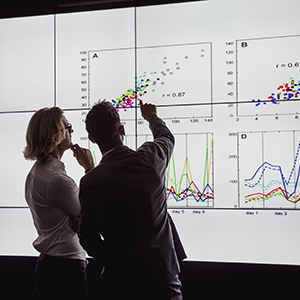How decrypted data could stop millions more becoming a statistic of COVID-19.
 Until one fateful day in Wuhan late in 2019, COVID-19 had never been recorded in a single human being. So, no-one knew how it would affect us, interact with existing conditions and medicines, and who was most at risk. All we had to go on was the symptoms people were presenting in ever-increasing numbers to emergency rooms across the globe.
Until one fateful day in Wuhan late in 2019, COVID-19 had never been recorded in a single human being. So, no-one knew how it would affect us, interact with existing conditions and medicines, and who was most at risk. All we had to go on was the symptoms people were presenting in ever-increasing numbers to emergency rooms across the globe.
Each new patient brought another vital piece to the jigsaw puzzle. But we didn’t know what the picture was yet. And early on, especially, this could have had some terrible repercussions. For example, in April 2020, the U.S. Centers for Disease Control & Prevention released a report that 72% of the hospitalised COVID-19 patients aged 65 or older had hypertension, and all were taking either ACE inhibitors or ARB medicines to control their blood pressure. As both these medicines work through the same biological pathways we’d learned COVID-19 uses to attack the lungs, some experts recommended patients stop taking them in case they were somehow facilitating the virus.
Others, however, argued ardently that patients should stay on their blood-pressure medicines. So, every GP now faced a dilemma: do you stop people taking life-saving medications at the risk they could make them more susceptible to a killer virus? An expert at the Johns Hopkins Center for Drug Safety & Effectiveness in Baltimore called this “one of the most important clinical questions”.
This is where UniSA’s Quality Use of Medicines & Pharmacy Research Centre comes in. Under the direction of Professor Libby Roughead, a team led by Associate Professor Nicole Pratt had been working for the previous five years as part of an international collaboration of interdisciplinary researchers known as OHDSI (Observational Health Data Sciences & Informatics) who analyse the deidentified records of patients’ medicines and their outcomes from around the world.
If that sounds fairly straightforward, it’s not. Even putting aside the problem of language differences, each country records a patient’s medical information differently. All of which can make statistical analysis a lengthy manual process. Unless, you can create computer code to translate each new set of data into a standard format. (Nicole compares it to using a travel adaptor plug.)
To try to solve the question about blood-pressure medicines and other pressing issues, Nicole and her team were preparing to travel to Oxford University to join a conference with OHDSI. But it was at this point the pandemic forced the world into lockdown and the conference had to be scrapped.
Undeterred, the would-be delegates hatched a plan. Instead of meeting in person at Oxford, they would meet online and a four-day study-a-thon was arranged. Researchers quickly organised themselves into smaller teams to tackle different subjects. For Nicole, there were two investigations she wanted to take part in: to search the data for evidence about how the blood-pressure medicines might be involved in modifying the susceptibility to and severity of COVID-19; and the idea of using data to create a patient risk calculator.
Over the course of a sleepless four days, 300 researchers across 24 time zones pored ceaselessly over shared data, building and rebuilding statistical programs to translate and analyse it. Every eight hours, the small teams would return to report via the virtual world on their progress, as well as seek out additional data. Finally, exhausted but elated after painstaking analysis of hospital records from across the world, including the USA, Korea and Spain, the 30 people in Nicole’s team had the answer: although still subject to peer review, they found compelling evidence that using popular anti-hypertension medicines does not put patients at any greater risk from COVID-19.
While work continues at the time of writing on the creation of a reliable tool to predict exactly who is at risk of the coronavirus, Nicole and the team at UniSA can be very proud of the work they have done so far to help reassure the hundreds of millions of people around the world with high blood pressure – and their doctors – they can keep taking their medicines and avoid harm.



